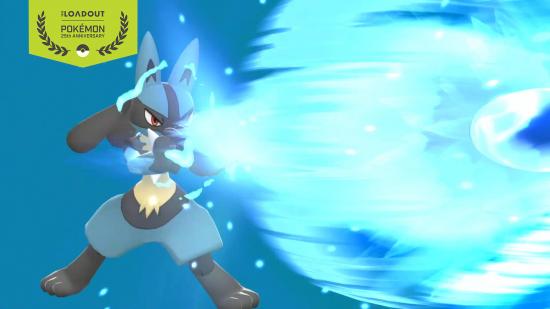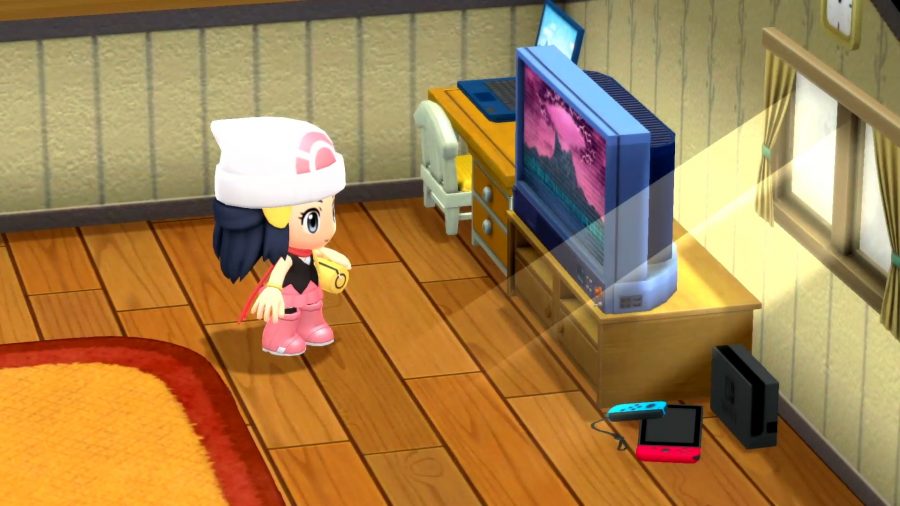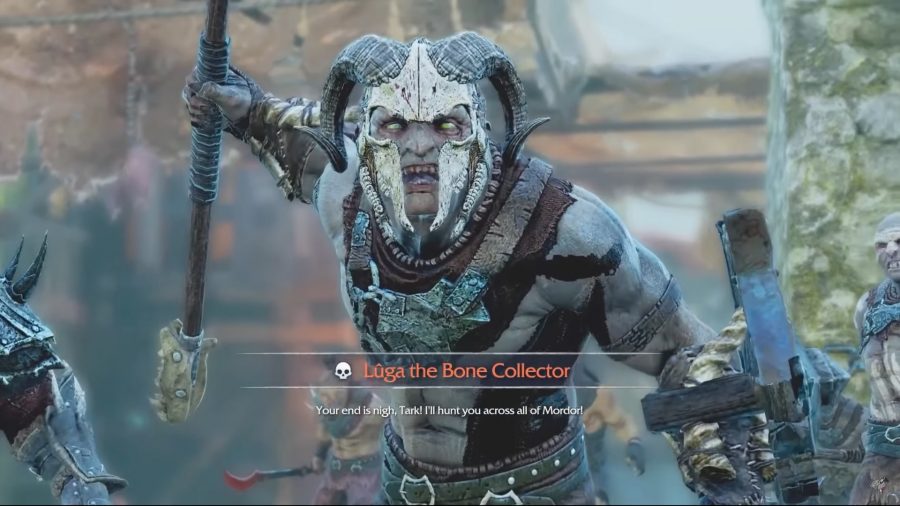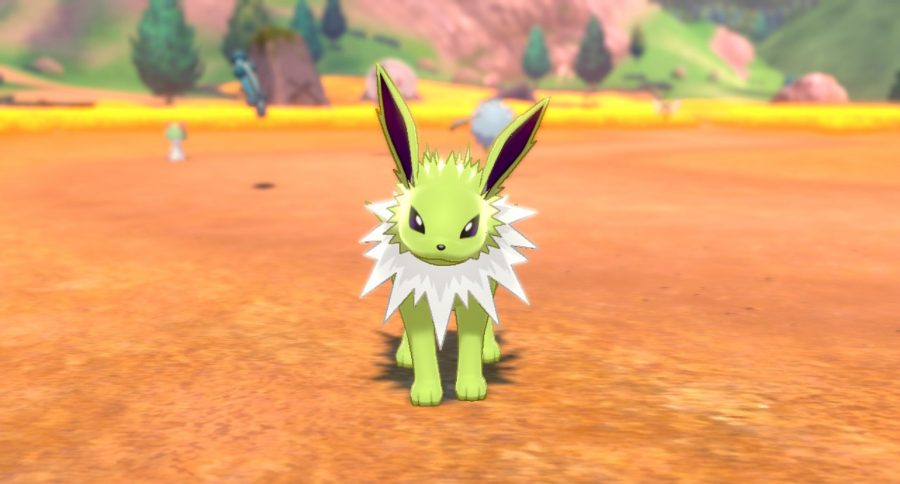Firstly, I’ll put out a little disclaimer: I am fully aware that the Nemesis System has now been patented by Warner Bros Entertainment. However, that does not stop it from being the best thing about Middle Earth: Shadow of War, nor does it change the fact that Pokémon would immensely benefit from a similar, intellectually distinct, system.
It’s always worrying when you start a feature with a disclaimer but I’ll double down: I quite like Pokémon Sword and Shield. The most recent games divided fans, but I found the streamlined Pokédex made for an innovative and exciting competitive scene and showcased more niche monsters on the Pokémon ranked ladder. My biggest gripe with the RPG, however, was that it was too easy – something I want to see change with the upcoming Pokémon Brilliant Diamond and Shining Pearl games, which were recently announced to be arriving to Nintendo Switch later this year.
The Wild Area can be a scary place early in your adventure: taking a wrong turn could land you in a battle with a wild Pokémon three times your level that will wipe your party and send you back to the Pokémon Centre. However, the Gym Leaders are a different story. Take Opal for example, the Fairy-type gym leader who resides in Ballonlea. As the fifth Gym Leader, she is regarded as one of the very best trainers in the Galar region – so why does she only use four Pokémon, and why do three of them only carry three moves?
No Gym Leader, nor the Champion Leon, gives their Pokémon held items to use and you can breeze through most battles without any additional training. I honestly don’t remember a single Pokémon fainting in my first playthrough of Sword and Shield and my party was hardly full of overpowered monsters – I refused to evolve Cufant because it looked too adorable, although I did give it an Eviolite to hold to boost its defences.
RPGs are nothing without a challenge, something Pokémon fans know all too well. ROM hacks are a popular go-to for fans who want a more difficult experience, especially those made by notorious hacker ‘Drayano’. His modded games such as Storm Silver and Sinking Sapphire ramp up enemy AI to use tournament strategies and synergies, as well as increasing their levels for a more conventional difficulty spike. Every Gym Leader also uses a full party of six Pokémon.
The other option is for players to play a Nuzlocke: a set of self-imposed rules that limit the Pokémon you can capture to your first encounter on each route and force you to release any Pokémon that faint in battle. But the problem with self-imposed rules is that the only thing forcing you to stick with them, is you.
When Sword and Shield are so easy, not even Nuzlockes offer too much of a challenge – so if the Pokémon Company wants more people playing and replaying Pokémon Brilliant Diamond and Shining Pearl rather than turning to Drayano’s Renegade Platinum, there needs to be a more difficult option.
The very best: an oral history of Pokémon VGC
Enter the Nemesis System. Warner Bros Entertainment’s treasured enemy system created a unique experience for every player who took control of Talion, the part-Wraith, part-Ranger protagonist of the Shadow games. The way it worked was simple: if you injure an Uruk boss but don’t finish the job – they’ll remember it. And if they killed you, God forbid, you never hear the end of it.
Say you injure an Uruk Captain with a stealth attack, they might return to face you with an immunity to stealth. If a Warchief stabs you to death with their blood-splattered scimitar, however, they taunt you when you return to their domain. What’s more, they might get an attacking buff depending on your weapon of choice in your previous encounter.
This can build terrifying enemies unique to your playthrough, and create stories that exist alongside and are interwoven with the larger storyline. In my first playthrough of Shadow of War, I found myself struggling to defeat a particularly nasty foe by the name of Thraka the Butcher. Time and time again I would fall by his hand and suffer through another of his brutal verbal takedowns, as the more often I was slain in battle, the stronger my foe would grow. Eventually, he became immune to stealth and ranged attacks, forcing me to tackle him in close quarters – where he was surrounded by loyal bodyguards.
By the time I finished my time with the game, I realised I cared more about taking down Thraka than the main story of Shadow of Mordor – a true testament to the system that Warner Bros. Entertainment built. However, a version of the Nemesis System has been used by Pokémon before. In Pokémon Red, Green, and Blue, the player’s rival chooses the starter Pokémon that is super-effective on your choice. If you choose Bulbasaur, they will choose Charmander. However, in Pokémon Yellow you’re forced to take Pikachu on your adventure and your rival, Blue, takes an Eevee into their care.
But it’s how Blue evolves his Eevee that is interesting. In Pokémon Yellow, Eevee can evolve into three Pokémon: water-type Vaporeon, electric-type Jolteon, or fire-type Flareon. They may not be the best Eevee evolutions these days, but they are undoubtedly iconic. And which of them Blue decides to evolve Eevee into depends entirely on your success in the first two times you face him.
If you lose your initial battle with Blue at Professor Oak’s lab, he will evolve his Eevee into Vaporeon, which your Pikachu will hit for super-effective damage. If you beat him at this stage but lose or skip the optional battle on Route 22, Blue will evolve Eevee into Flareon, which suffers neutral damage from Pikachu. And if you’re successful on both occasions, you and Pikachu will have to face off against Blue’s fearsome Jolteon when you battle him at the Silph Co., which Pikachu only delivers not very effective damage to. Of course, you’ll take less damage in return and will likely utilise other Pokémon in your party to take on the fight, but the framework is there.
Blue learns from your skill level in the early stages of the game, and adjusted his team accordingly.But a more complicated version of this could make Pokémon Brilliant Diamond and Shining Pearl a much more enticing – and challenging – prospect.
By limiting the system to only affecting Gym Leaders, it would have a profound impact on the game’s difficulty and add to the excitement of important moments. If you white out and lose battles in the first two gyms, for instance, maybe Maylene and her Fighting-type Pokémon will go slightly easier on you in the third gym. If the player defeats seven of the eight gyms with ease, Volkner should bring the absolute thunder (pun intended) using a fully-trained team of six electric-type Pokémon that synergise with each other, cover each others’ weaknesses, and create a cohesive strategy to defeat you.

What’s more, your rival could do with a couple more brain cells than young Hop, too. Sword and Shield’s rival is widely regarded as being a bit on the annoying side, but the poor chap really doesn’t have the brain for Pokémon battling. He could do with brushing up on his Pokémon type chart for starters – pop a Ghost-type Pokémon out in front of Hop’s Wooloo or Dubwool and it will spam normal-type attacks instead of switching out, despite the fact that they do no damage whatsoever.
I want to see a rival who learns from your team and strategies, who remembers that you carried Grass Knot on Infernape to hit them for a surprise super-effective hit, or who brings an Abomasnow to hard counter the Garchomp you keep setting up Dragon Dances with to sweep their whole party.
If the Pokémon Company is worried about making the game inaccessible for a younger audience, it could always hide this added difficulty setting behind a Challenge Mode like in Pokémon Black 2 & White 2 – it worked then, so why not now?



